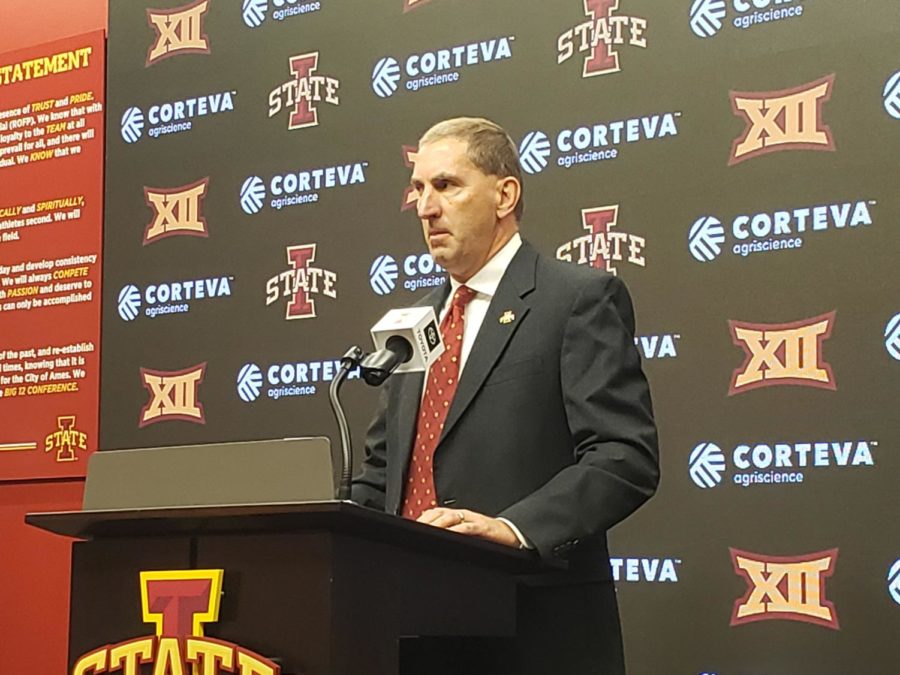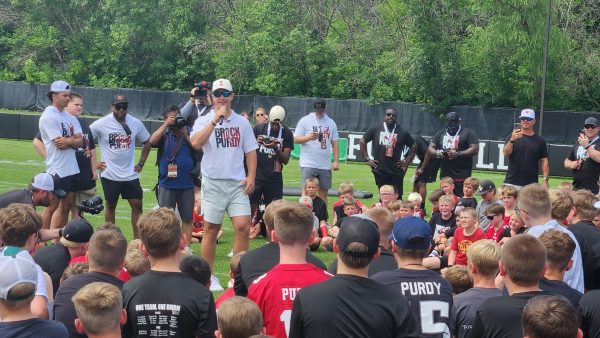Stuve: What scheduling options are on the table for the 2020 football season
July 30, 2020
With the COVID-19 virus still affecting the United States, many NCAA conferences have pondered and made changes to their fall sports schedules.
According to the Stadium Network’s Brett McMurphy, there are three options the Big 12 is discussing for the 2020 season.
In a tweet, McMurphy wrote, “12 games [the full regular season]; 9 Big 12 games + 1 nonconference game; or 9 Big 12 games only.”
He said a full 12-game schedule is the least likely option as things currently stand because of other conferences, such as the Big Ten and Pac-12, having eliminated all nonconference games.
The Atlantic Coast Conference (ACC) announced Wednesday it would be going to an 11-game schedule with 10 conference games and one nonconference game.
The Southeastern Conference (SEC), announced Thursday it will move to a 10-game conference-only schedule for the 2020 football season.
Iowa State announced Tuesday it had added the Ball State Cardinals to its 2020 football schedule (Sept. 12).
This doesn’t mean Iowa State will play a full season however, in fact, Iowa State Athletic Director Jamie Pollard told the Des Moines Register on Wednesday, “We have 12 games on our schedule, do I think we’ll play all 12 games? No, because there’ll be a game we can’t play. There will probably be a game or two where somebody else can’t play.”
If no season is played at all, Iowa State will lose a lot of money.
In a letter July 13, Pollard said the athletic department would lose about $40 million in unfunded expenses in the next six months if college sports can’t be played in the fall.
He said the cuts that could happen would be in layoffs, reductions or eliminations and maybe the elimination of some sports at Iowa State.
Each school in the Big 12 would lose millions of dollars if fall sports can’t be played. Football is the most important to get up and running because it is the biggest money maker.
Back in May, Pollard said “If football can’t be played and we can’t have some fans in the stands, the financial hit is so significant that it will impact other sports.”
He added, “If we can’t get the football program up and running in fall, then we’ll be in a world of hurt. Football generates 75-80 percent of our revenue, it is the engine that pulls the train.”
The Big 12 is still unsure about what its football schedule will look like, which is why it canceled the Virtual Media Day that was scheduled for Monday.
The Virtual Media Day has been postponed two times before finally being canceled Thursday.
“A media day is intended to talk football and the prospects for the season,” Big 12 Commissioner Bob Bowlsby said. “Part of that discussion is who you will be playing and when. With the on-going consideration of scheduling models by our Board of Directors, this is the best course of action at this time.”
According to the release, “A media briefing with Commissioner Bowlsby will be scheduled in the near-term to update on the State of the Conference.”
Another question is what guidelines will be in place for games in the fall.
How many positive COVID-19 cases will it take for a team to have to cancel a game? The entire season? How long does a player have to sit out if he tests positive for COVID-19? How long does a player who’s been exposed to COVID-19 have to sit out?
All of these questions will be answered soon, whether it comes from a uniform decision by the Big 12 Conference or comes from guidelines each school comes out and publishes.
Each Big 12 school has conducted its own testing of its sports teams and are likely to continue to do so. Iowa State reported July 13 since student-athletes have come back in mid-July, the athletic department has had nine positive COVID-19 cases out of 386 tests.
The NCAA came out on July 16 recommending, “the appropriate” use of face coverings and social distancing during training, competition and outside of athletics, testing strategies for all athletics activities — including preseason, regular season and postseason — and testing and results within 72 hours of competition in high-contact risk sports.
Since July 1, masks have been required to be worn on Iowa State’s campus and the Iowa State football team has put out tweets with coaches and athletes wearing masks.
According to ESPN’s Heather Dinich, the NCAA has also published specifics on how teams can know when it’s unsafe to continue sports.
Dinich said in an article July 16 the NCAA specifics are: a lack of ability to isolate new positive cases or quarantine high-contact risk cases on campus, inability to perform symptomatic, surveillance and precompetition testing when warranted, campuswide or local community test rates that are considered unsafe by local public health officials, inability to perform adequate contact tracing and local public health officials stating there is an inability for the hospital infrastructure to accommodate a surge in hospitalizations related to COVID-19.
The Big 12 Conference also reported to be adopting the 72-hour testing.
Ultimately, the COVID-19 positive case numbers and the testing available for COVID-19 may dictate what the schedule will look like for football and other fall college sports.
It seems like the current options for the 2020 college football season are a full 12-game schedule, a 10-game schedule with nine conference games and one nonconference game, a nine game schedule of only conference games, or if it is deemed necessary for the safety and well-being of the players and athletic staff, no season at all.

















